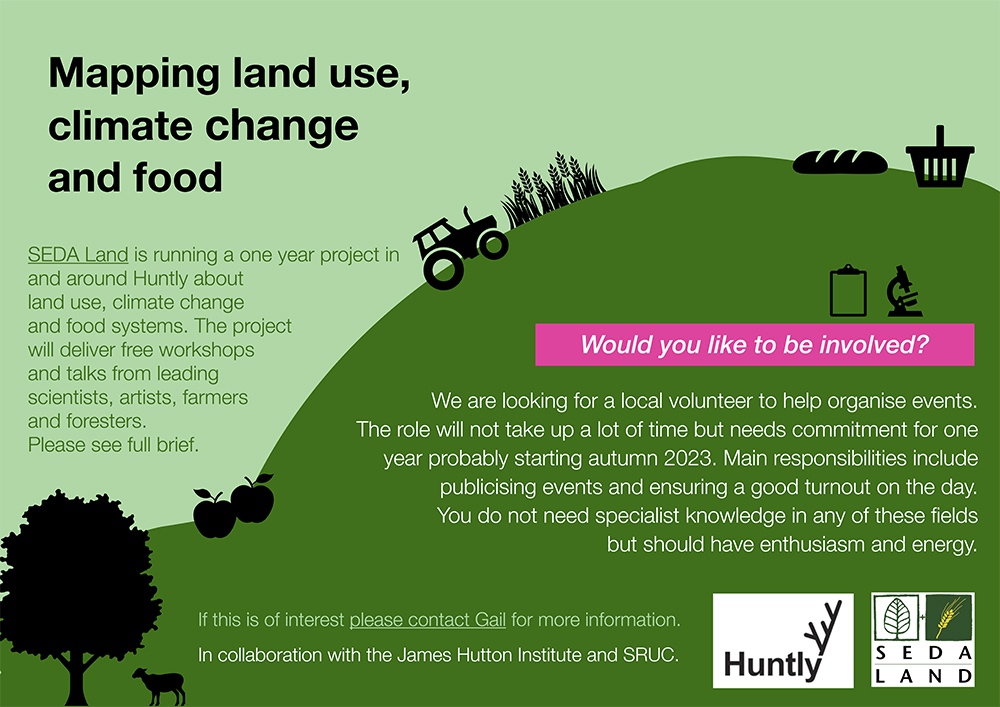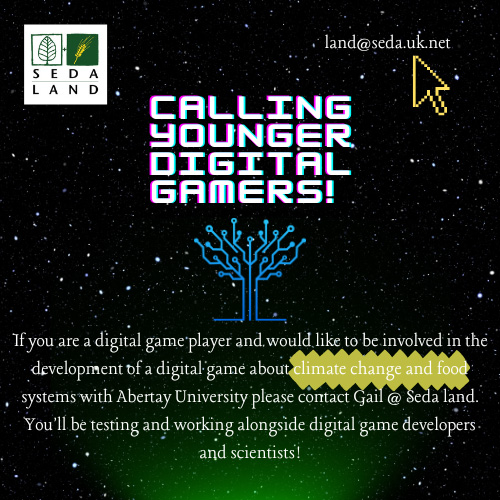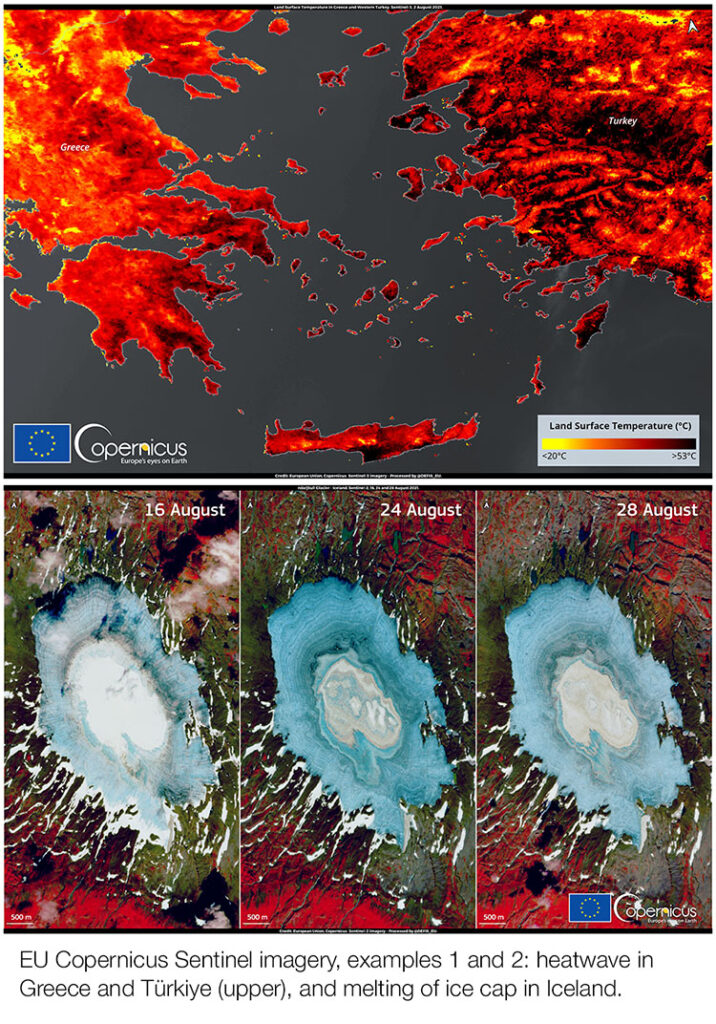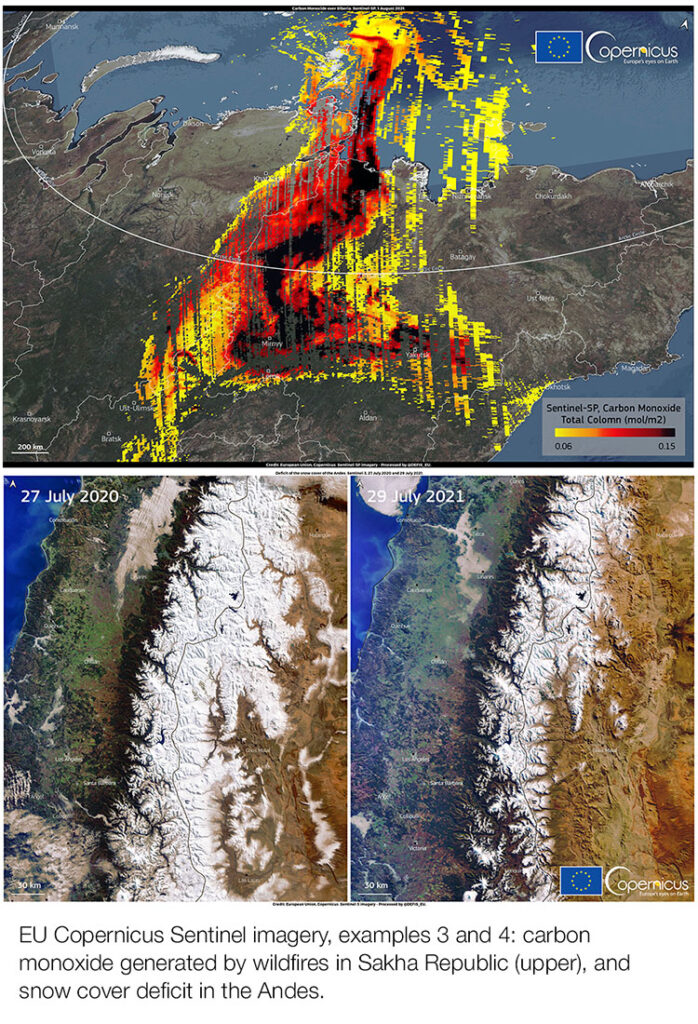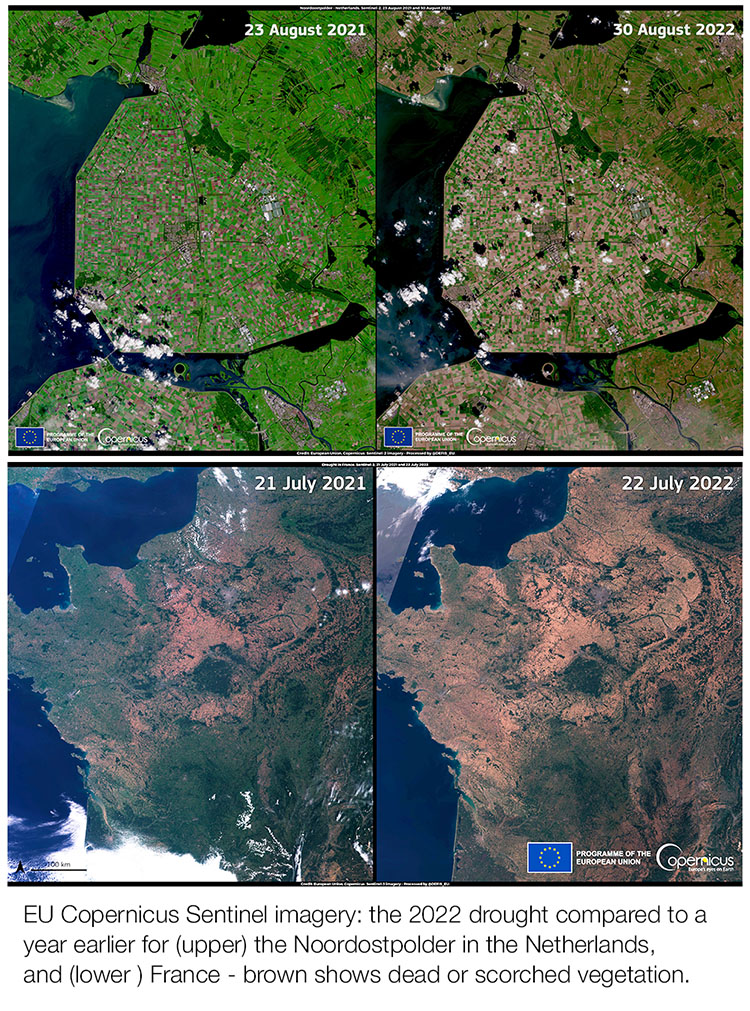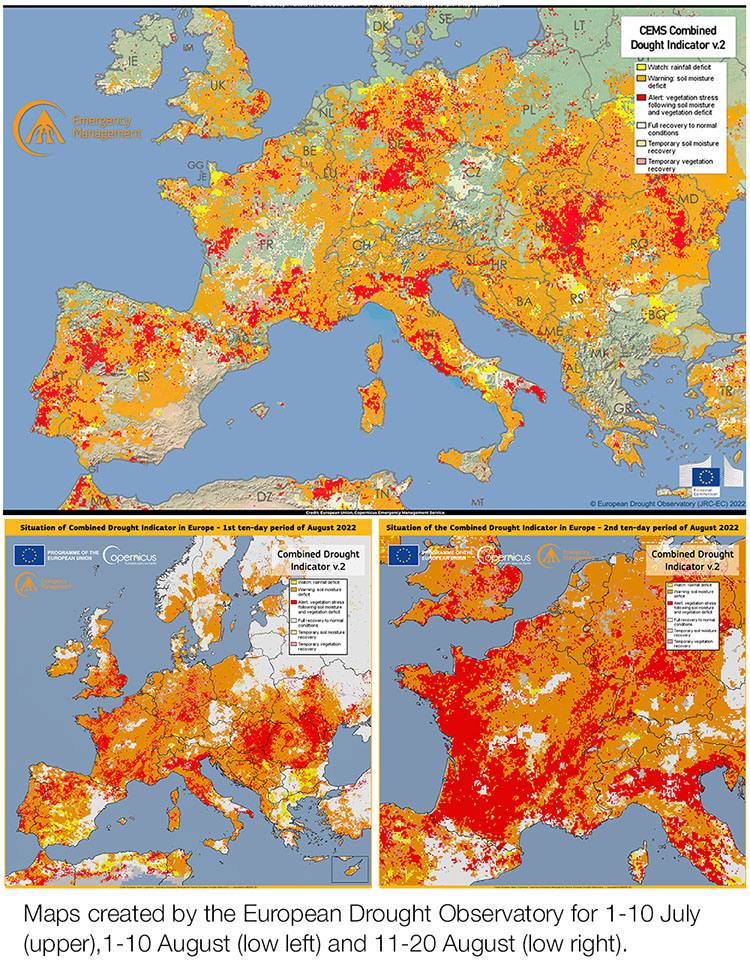A Project by SEDA Land and the Huntly Community.
This project – Mapping Land Use, Climate Change and Food – has developed over the last couple of years from an idea into funded reality and now SEDA Land is looking for volunteers to help organise events around Huntly.
AIMS
The Project will work with the community of Huntly [1], Aberdeenshire, to investigate the impact of climate change and alternative food systems on the local area.
SEDA Land writes: “We will investigate the long-term effects of land-use decisions on climate change and the food chain using a variety of tools over the next three years. This will be a collaboration between the community, artists, scientists and local landowners. We will also involve innovative food producers and farmers.”
All the tools proposed in this project are aimed to help the community understand and visualise a possible alternative and productive ecological landscape that serves the climate, the community and which could lead to innovative new forms of employment in the area.
This proposal addresses three of the recommendations from SEDA’s
“A New Vision for Land Use in Scotland 6 Conversations” published in partnership with the SRUC and the James Hutton Institute in August 2021, in particular the healthy food strategy [2].
SEDA Land is part of the Scottish Ecological Design Association (SEDA).
Why Huntly?
Huntly was chosen because it is a good example of a mid-sized (population of 4,460) highland town, where surrounding farmland is predominantly used for grazing. We will be seeking to dispel the stereotypical view of the Highlands as sheep-grazed uplands, and explore the potential for alternative land uses – introducing the local community and local farmers to the scope for growing food on slopes; seasonal food; foraged food and indoor-grown food. We will also demonstrate that alternative farming brings increased biodiversity, carbon storage and other benefits.
SEDA Land already has strong connections with Huntly Development Trust, The Deveron Project (a local arts group) and The Gordon Schools (local primary and secondary schools). The development trust owns 63 acres of community land at Greenmyres, five miles southwest of the town. This should permit any residents who are inspired by our project to start using the land in a regenerative way for themselves. We have also established links with Beldorney Estate where we are able to run workshops and the arts projects.
“I think it is really helpful to use art to get past the usual narratives in which there is a designated ‘bad actor’ – a ‘villain’ to protest against. I think art can be great at showing our common humanity and showing that the ‘villain’ is not a person or group of people, but certain aspects of human nature, and of course, climate change itself”.
Sophie Cooke, artist
Toolbox
These tools are intended to engage people in new ways of thinking about the land, climate change and their food systems.
An interactive computer game – the digital game is being developed by students at Abertay University in Dundee to highlight the complex interrelatedness of climate change, biodiversity, land use and food sourcing . Primarily aimed at 13-45-year-olds, the game will require players to balance the uses and products of land to the best advantage of the community and the planet, measured in outcomes such as carbon capture, food sovereignty and health and well-being. We believe it is easier for people to visualise the palimpsest of issues involved if these can be presented graphically and innovatively.
Biophysical data collection – The community will seek to define its present and future needs with the help of scientists and artists, addressing issues such as resilience and a “just transition”. Data will be collated about land use and food sourcing both locally and globally – covering soil health, vegetation and climate. New information will be gathered about local food sources and waste management.
Field workshops – Professionals (soil scientists, regenerative farming experts, forestry experts, food entrepreneurs etc) will run workshops with the Huntly community, local farmers, foresters and landowners to develop/complement the ecological themes above. Artists will use creativity and storytelling to communicate ideas between the various stakeholder groups.
Artistic pieces – Two community projects are planned to be run by a visual artist and a poet to produce works of art in the landscape around Huntly relating to the aims of the project and using material from the workshops.
Mapping
We intend to use maps of all types to make it easier for people to visualise what effect climate change is expected to have on their local area – including in scenarios such as if there is no change to the current farming practices and in the event of bold and imaginative alternatives being adopted. These will include maps showing existing soil types, water, climate etc. along with maps drawn up with the community using local knowledge and drone footage.
Examples of maps and mapping are given on the Living Field editor’s curvedflatlands web pages [3].
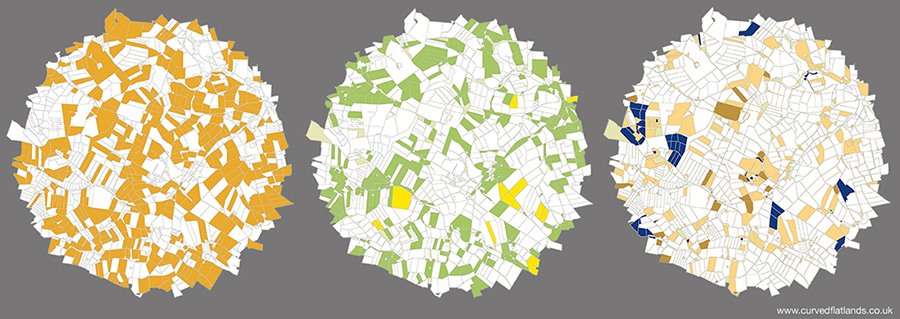
The above text and image, apart from the maps, are extracted from the full project description available available as a PDF file [4].
For further info or if you want to be involved, contact Gail Halvorsen by email: land@seda.uk.net.
Sources | links
[1] Among organisations and people involved: Huntly Development Trust and Deveron Projects.
[2] SEDA Land is a part of the Scottish Ecological Design Association. The 2021 report is available as A New Vision for Land Use in Scotland – 6 Conversations downloadable from Past events and reports.
[3] On the curvedflatlands web at Community Mapping – food climate
[4] The following PDF file contains a description of the project, including those contributing.

